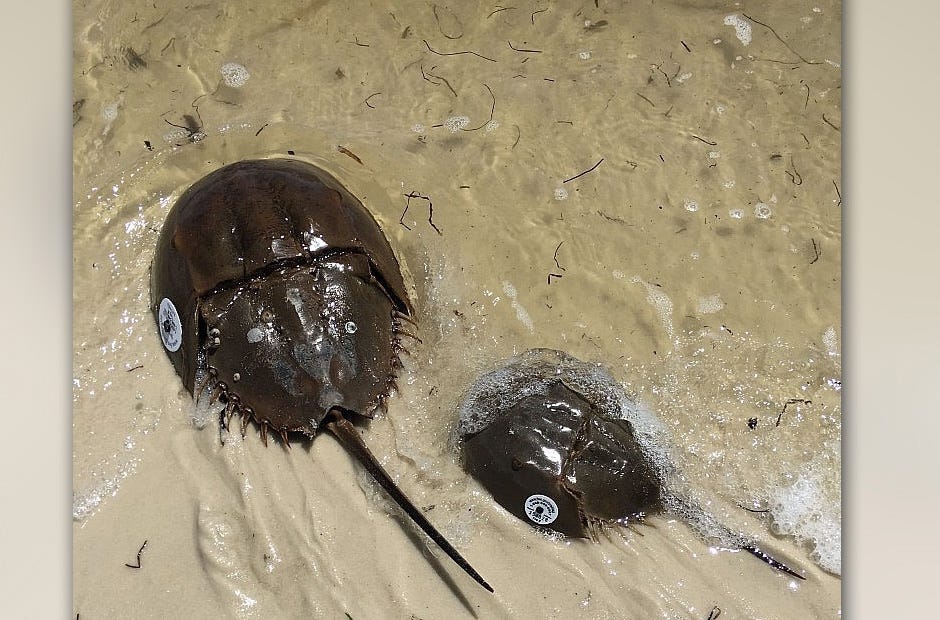![A horseshoe crab watch is underway in Northwest Florida. [Special to the News Bulletin]](http://127.0.0.1/wordpress/wp-content/uploads/2022/01/ghows-DA-571315db-c500-04fa-e053-0100007f7ff1-031dcbba.jpeg)
The Florida Fish and Wildlife Commission and Florida Sea Grant scientists at the University of Florida Nature Coast Biological Station at Cedar Key have teamed up to assess the horseshoe crab population on Florida beaches.
The Florida Horseshoe Crab Watch survey is held twice a year, during full and new moons of the fall and spring months.
This year, the fall sampling season is Sept. 19-21, Oct. 4-7 and Oct. 18-21.
Horseshoe crabs are important in coastal areas, especially to the many shore birds and other creatures that eat their eggs. They are also used in medical testing. Their blood has a special ability to coagulate around bacteria and is used as an indicator of sterility. They typically live in the muddy sandy bottom, but head to the beaches during the spring and fall to find a mate.
The females are much larger than the males and you often find them cavorting in groups. This behavior provides an opportunity to monitor them. We don’t currently have good population numbers on these prehistoric-looking creatures, but it’s a common perception that numbers have been declining for years.
Simultaneous sampling across such a large geographic area in Florida would be impossible without the help of volunteer citizen scientists. The FWC is dedicated to collecting data on horseshoe crab nesting, but does not have anywhere near enough staff to achieve the high level of data collection the volunteers are able to complete. Information of this kind is extremely valuable for helping researchers understand population connectivity across nesting areas.
In an effort to initiate the program in Okaloosa and Walton counties, the UF Institute of Food and Agricultural Sciences Extension Marine Science program will participate in a preliminary sampling project this fall.
It will be a simple presence-absence study, with volunteers walking the shoreline on their own, noting GPS coordinates of sightings and submitting data and a picture via email to the Extension office.
If initial data warrants, the program will be expanded in the spring, collecting measurements, and perhaps doing some tagging. The long-term goal is to try and get an idea of the numbers of crabs in Choctawhatchee Bay or on our beaches. The sampling program has worked well in other areas of the state with all of the volunteers in the program agreeing to some degree that they considered themselves stewards of horseshoe crabs.
Send me an email at lgtiu@ufl.edu for more information about how to get involved in Florida Horseshoe Crab Watch. If you see a tagged horseshoe crab, please note the number on the tag and use the hotline, 1-888-546-8587 or www.fws.gov/crabtag, to report the number, sighting location and condition of the crab.
Laura Tiu is an agent at the University of Florida's Institute of Food and Agricultural Sciences Extension office in Crestview.



This article originally appeared on Crestview News Bulletin: The great horseshoe crab roundup
